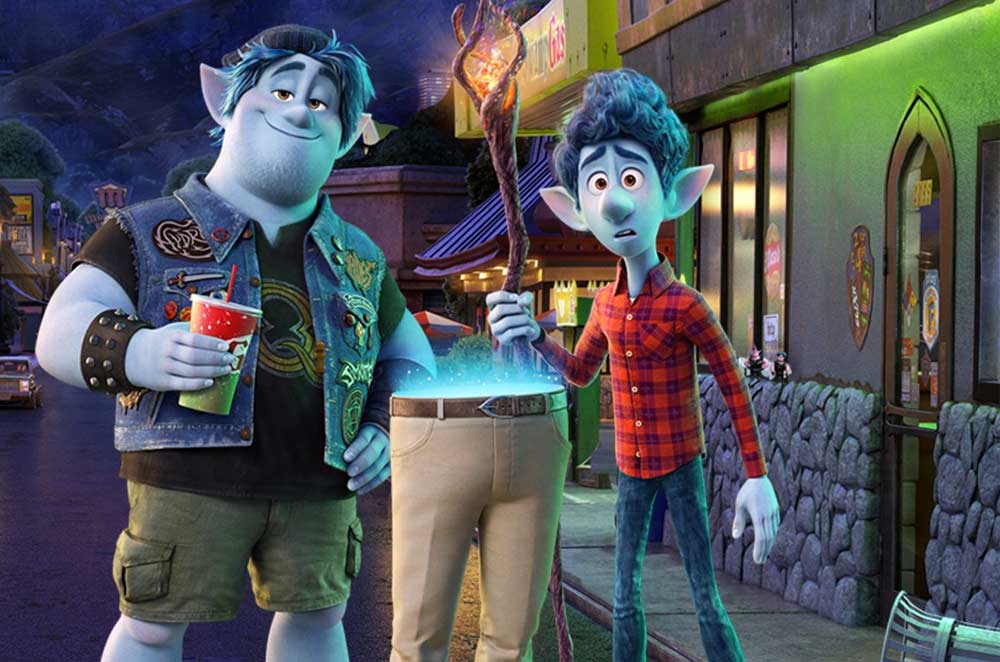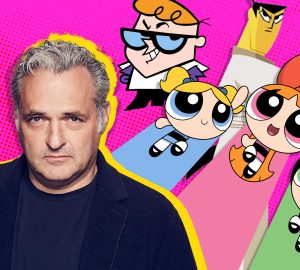A talk with ‘Onward’ story lead Kelsey Mann

Pixar brings in a new decade of animation with the upcoming release of their newest film, “Onward.” Taking place in a suburban fantasy world, the story focuses on of a pair of elf brothers who go on a treacherous road trip to unlock a magic spell that could help bring back their long lost father for one day.
As per usual, making one of these projects is a massive group effort that requires the combined talents of artists, animators, editors, sound designers, voice actors and many more. However, no matter how big the film may be, it always starts with the story, as this is the most crucial element of them all. Long time Pixar story artist, Kelsey Mann, sat down with us to go over his career in the industry and let us know a little more on this exciting film.
The Connector: When did you get your start in this industry and how did you get involved with Pixar specifically?
Mann: I went to school in Michigan and got a degree in illustration. I graduated in 1998 and was working in a commercial studio in Minneapolis where I learned a lot about animation. Then I applied to Pixar in 2000 and got denied which really bummed me out because I really wanted to work there. But I continued to work on my skills and my wife and I moved to LA in 2000, where I started working on smaller studios, doing internet animation and taking night classes. So even though I was done with college I continued to learn and shape my skills so I could get to a level to where I could get hired in this industry.
My first big break was when I got a position at Cartoon Network, which was my first real stioryboarding job. The other place I was working at had me wearing different hats, such as animating, doing background design and a little bit of storyboarding, but this was the first time I exclusively was a story artist. I just loved it. You get to wear a lot of different hats in this role. I continued that for a few year while taking classes at night and tried to make the make the jump to features. I created a portfolio that contained feature level storyboards. The work I submitted to Pixar didn’t really contain my television work, but rather contained my personal work that I chug away at at night. I moved up to the Bay area, but Pixar wasn’t hiring at the time, but Lucasfilm was, so I started working there and got a chance to work at Skywalker Ranch which was a dream come true. I was working there for about six months when a position for a story artist opened up at Pixar and I applied. It took five months for them to even call me. So I got a call out of the blue and went into an interview which took about a month to process afterwards. And then I got hired in 2009, so it took me nine years after that first initial rejection letter for me to get my skills up to that level.
The Connector: Do you think your previous industry experiences in different roles benefit you now as a story artist?
Mann: Yeah, completely. My knowledge of the animation process is more diverse, which definitely helps me. As a story artist, you have to think about a lot of different departments. A lot of the time when we start, we have nothing to work off of but the script and we’re the first ones to draw anything. We’re the first ones to try out a scene, so we don’t want to waste the art department’s time building a set that may not be in the movie. So we may get a set that’s in a library and we don’t have anything, so we have to design the space that we’re going to be shooting in, so there’s a bit of design that needs to go in to that. Animation comes into play too, because we’re boarding digitally, so you’re doing a lot of acting, a lot of posing, a lot of movement. So my experience being an inbetweener and animator comes into play.
I get jealous of the people who get jobs at Pixar right out of school, but looking back on it, my experience shaped me into being the artist I am today. So if I could go back and do it all over again, I would do it the exact same way, it really helped shape who I am.
The Connector: Having lead such a wide array of works, as a story lead, what do you look for when it comes to picking people to be a part of your team?
Mann: I look for a couple of things. First and foremost, can you draw? Because it’s a lot of drawing. Your drawing skills need to be up because you need to be able to draw whatever angle the camera might be at. It also has to appear appealing, you want to not want to look away from the drawings. Do you have a great cinematic language or are you just drawing wide shots that are at eye level? You want to look for people who understand film and cinematography. And the other thing I really look for are people with a very specific voice. I love when people put in funny little gags or comments about their experiences and observations about life. Someone who can tap into that unique perspective and voice, one where you can say “oh man I know what they’re talking about, I felt that way too.”
The Connector: “Onward” contained some real emotional surprises that many of us were not expecting to see given its premise. Is there a secret to tapping into the emotional core of a story and subverting an audience’s expectations?
Mann: Dan [Scanlon] wanted to make a movie that was super fun and funny and just surprises the audience with an emotional gut punch. We tried to tell that emotional story that you didn’t see coming. We have an internal website where people can submit their notes us and one of the questions we had was “did you see the ending coming?” For the longest time, we actually took it off because everyone was saying yes, it surprised people. But that’s why we make these movies just to move people and say something poignant and real. It’s something that comes from a real place, something that Dan took from his own life and experiences about losing his father. But it’s one where you don’t need to have Dan’s experience to understand, everybody can relate to it in a certain way, we’ve all experienced loss and support. I hope word-of-mouth spreads about that surprise because I feel it is going to be surprising to some people.
The Connector: What is the single most important thing you’ve learned about your time at Pixar and how do you feel you’ll continue to evolve as an artist?
Mann: There are a lot of things I’ve learned over the years doing this, but I think if there’s any secret to what we do at Pixar, its just to be real and honest about what it means to be a human being experiencing life. One of my favorite places at Pixar is the story room, it’s a safe environment and as a story supervisor, I get to shape that environment for everybody to speak vulnerably and talk about our own experiences growing up. Being bold enough to be vulnerable is key, because we can find those truths and implement them into the film and that’s what makes the movie believable. We want to entertain audiences, don’t get me wrong, but it ultimately needs to be for a point. We want to say something about living life and the more we can put that truth within ourselves into the films, the better the movies are going to be.
Be sure to check out “Onward” when it releases worldwide on March 6.



























